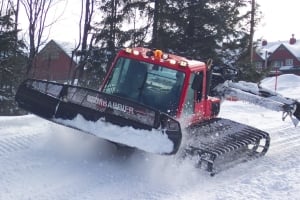Winter's Coming Fast — Is Your Fuel Operation Ready for What's Ahead?
September marks that familiar shift when fuel distributors across the northern regions start fielding the calls. Fleet managers asking about anti-gel...
3 min read
Erik Bjornstad : Oct 14 2024

The practice of mixing up to 5% biodiesel into diesel fuel without the necessity of labeling it as such is one of the reasons biodiesel use is higher than ever. Virtually all of the "regular" diesel you get at the gas station or truck stop (or get delivered) has 2-5% biodiesel in it.
Beyond that, a growing number of facilities are buying biodiesel and mixing it themselves on-site. But while biodiesel has some wonderful qualities, storing it and using it on medium and large scales can pose a problem in the colder months. So we put together some comments to help guide those of you blenders through.
We said a lot of companies are getting it in bulk, putting it in dedicated tanks, and mixing it with their stored diesel fuel. Blending biodiesel with diesel to make a desired Bxx blend involves a little more consideration than just dumping a quantity of one on top of the other.
In-line blending (also called wild stream) is a good way for optimal homogenization when you're mixing two kinds of things, but it requires that the biodiesel be kept at least 10 degrees (F) warmer than its cloud point. And for some tropical bio feedstocks that are really bad in the cold (like palm oil), the recommendation is 20 degrees warmer. If you remember to do this, it makes it much easier to successfully blend the biodiesel into the diesel base.
Not everyone can do in-line blending, though. Splash blending is their only option. Here, it’s doubly important that the biodiesel be warm enough. Remember that you’ll be putting cold-sensitive biodiesel into a cold tank or tanker truck. If the biodiesel isn’t warm enough, it will flash freeze before you can ever complete the mixing process. It’s not unusual for blenders to warm the biodiesel past 100 degrees F. The warmer you get it, the more successful you’ll be at blending.
Lastly, when you’re done, be sure to test your final blend for operability. And once it is blended, you still have to consider how to keep the blend from unduly freezing in the winter. The general rule is that putting 20% biodiesel into diesel will make that blend gel at a temperature 10 degrees higher than before. Not good. To combat this, you can use a combination of cold-flow fuel treatments and also kerosene blending. Kerosene is most effective when the expected temperatures approach -30 to -40 degrees.
Since biodiesel behaves differently from petrodiesel, particularly in cold weather, due to its different chemical composition, there are other considerations you need to take into account:
1. Storage and Handling: Storage tanks and fuel systems should be designed to handle biodiesel’s characteristics. Biodiesel can be more corrosive than petrodiesel and may degrade certain types of rubber or plastic. Your tanks and lines may need additional insulation or heating elements to maintain the proper temperature (because biodiesel is sensitive to that).
2. Quality Control: This feels like it should be a given, but it's worth a reminder. Always ensure that the biodiesel you're using meets ASTM D6751 specifications for biodiesel. Poor quality biodiesel can lead to issues like filter plugging, especially in cold weather.
3. Compatibility with Infrastructure: Related to #1 above, some older infrastructure may not be fully compatible with biodiesel. Materials in seals, hoses, and gaskets may degrade in the presence of biodiesel. Make sure all of the materials in your system will resist this.
4. Monitoring for Microbial Growth: Biodiesel can be a breeding ground for microbes, especially where water is present. Regular monitoring and treatment for microbial contamination are essential. You may want to consider utilizing an on-site ATP-By-Filtration setup, which can give you reliable results on your microbial counts in just 5-10 minutes.
5. Pump and Filter Maintenance: Increased maintenance and monitoring of fuel filters and pumps may be necessary as biodiesel can clean deposits from tanks and lines, leading to clogged filters initially.
Each of these considerations involves both the physical properties of biodiesel as well as the operational aspects of handling and using the fuel. It's also advisable to stay updated with the latest research and guidelines from industry organizations and regulatory bodies.
September marks that familiar shift when fuel distributors across the northern regions start fielding the calls. Fleet managers asking about anti-gel...

The equipment used in agriculture covers a wide range from small two-cycle engines to large crop planting and harvesting equipment. A lot of farm...

Cold temperatures wreck havoc on the useability of diesel fuels and biodiesel blends because of their effect on the paraffinic components of the...